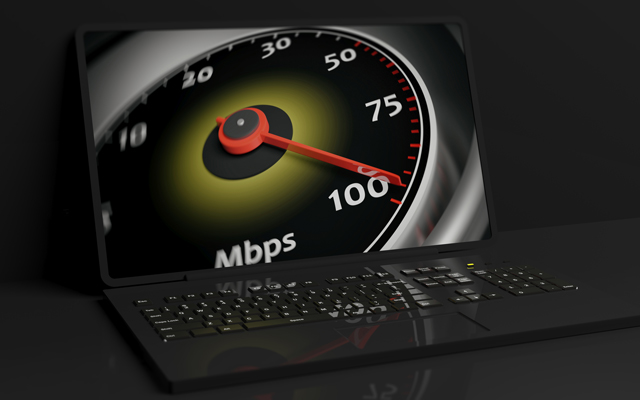What is 4G?
4G refers to the fourth generation of mobile telecommunications technology. In its early days, it consisted of two main technology branches: WiMax (Worldwide Interoperability for Microwave Access), and LTE (Long-Term Evolution). In turn, LTE has opened the door to LTE-M, a type of low power, wide-area network (LPWAN) solution that has proved particularly effective for business applications, including IoT projects.
Here’s a closer look at this generation of cellular networks and how they can benefit your business.
The history of 4G
From the early 2000s onwards, mobile carriers were starting to use the label ‘4G’ to describe a number of technologies and services. The industry needed clarity on what it meant.
In 2008, the International Telecommunications Union (ITU) set out its standards for 4G connectivity, which all services had to meet if they were going to describe themselves as 4G. For mobile, this meant that connection speeds needed to have a peak of at least 100 megabits per second, and for stationary uses, at least 1 gigabit per second. Back in 2008, these speeds were not yet practically achievable; they were intended more as a target for developers to aim for.
At that time, a technology called WiMax was a real contender to become the dominant 4G connectivity solution. Sometimes dubbed “Wi-Fi on steroids”, WiMax operated on the same principles as very long-range Wi-Fi, with the potential to replace both traditional landlines and mobile internet.
For various practical and costs reasons however, most carriers decided not to invest in whole new WiMax networks. Instead, they opted to adopt LTE, which essentially involved an upgrade to existing network technology, rather than whole new infrastructure.
The first iteration of LTE was not created with IoT usage in mind. Power consumption was around 50% greater than 3G technologies. It also uses many more frequency bands than 3G and 2G, which may mean you need multiple modems to deploy it globally.
However, over the last few years, LTE has given rise to evolved technologies designed for industrial, commercial and consumer-focused IoT projects:
- LTE Cat M or LTE-M (Long-Term Evolution for Machines)
- LTE Cat NB or NB-IoT (Narrowband IoT)
- LTE Cat 1
Both LTE-M and NB-IoT require upgraded network infrastructure whereas LTE Cat 1 does not. LTE Cat 1 can operate on the original 4G LTE networks.

4G, and particularly the IoT-focused variants known as LTE-M offer the following:

Performance
LTE Cat 6 has improved the latency and bit-rate (or speed) to 300Mbps versus the 150Mbps which LTE Cat 4 delivered. While this performance has significant benefit to smart phone or tablet users and in LTE Gateway or Router based applications it is of no real benefit to most IoT applications. The impact on power consumption, therefore battery life, of LTE Cat 6 is detrimental to IoT.
LTE has also evolved at the lower end of the performance spectrum making LTE more suitable than ever for IoT even when there are long battery life requirements.
LTE Cat 1 provides 10Mbps downlink and 5Mbps uplink speeds.
LTE-M offers typical uplink and downlink speeds of 375kbps, with the potential to reach a peak of 1Mbps. Latency would typically be in the order of 100ms.
NB-IoT is deliberately designed to be lower performance and can provide sub-100kbps uplink speeds (sub-30kps on downlink). Latency would typically be in the order of 1s.
When selecting which technology is most suitable, it will be necessary to balance performance, coverage (indoor and outdoor), mobility and battery life requirements.

Power saving
Power saving mode is incredibly useful where devices do not need to be contactable between sending messages. You can configure your devices to go into hibernation, but they are still able to keep the network updated with status updates. LTE and NB-IoT support these kinds of features.
LTE has also evolved at the lower end of the performance spectrum making LTE more suitable than ever for IoT even when there are long battery life requirements.

Coverage
LTE-M and NB-IoT offer better range and better penetration not just into buildings, but also into underground and semi-underground locations.
How is 4G used in IoT?

The standard 4G protocol (LTE) offers a useful connectivity option when you need high data throughput. Prime examples include security systems that incorporate video transmission and analytics or have machine vision, augmented reality (AR) or artificial intelligence (AI) requirements.
However, for less data-hungry IoT use cases, there are more appropriate options.
Not least, the ability to extend battery life by going into hibernation mode is ideal for machines in difficult-to-access locations where high call-out costs apply.
NB-IoT is well suited for large scale deployments of stationary devices with lower data requirements; eg, utility meters, some condition monitoring applications and environmental sensors.
Higher speed, lower latency and mobility features make LTE-M a good option for a broad range of applications including emergency equipment (e.g. lifts and remote assistance equipment, lone worker solutions, asset tracking and more).
LTE Cat 1 works well when the IoT devices have a power source or have battery recharge regimes around them which do not add cost overheads or detract from the user experience; e.g. micro-mobility, consumer wearables, M2M Gateways and more.
Offering a range of solutions with options for performance, coverage, low maintenance and value for money, the 4G LTE technologies offer choices for IoT.
Find out more
For an expert assessment of your connectivity needs and to discover the best fit M2M options for your business, speak to Wireless Logic today.
Learn more about our connectivity solutions for a wide range of use cases here.